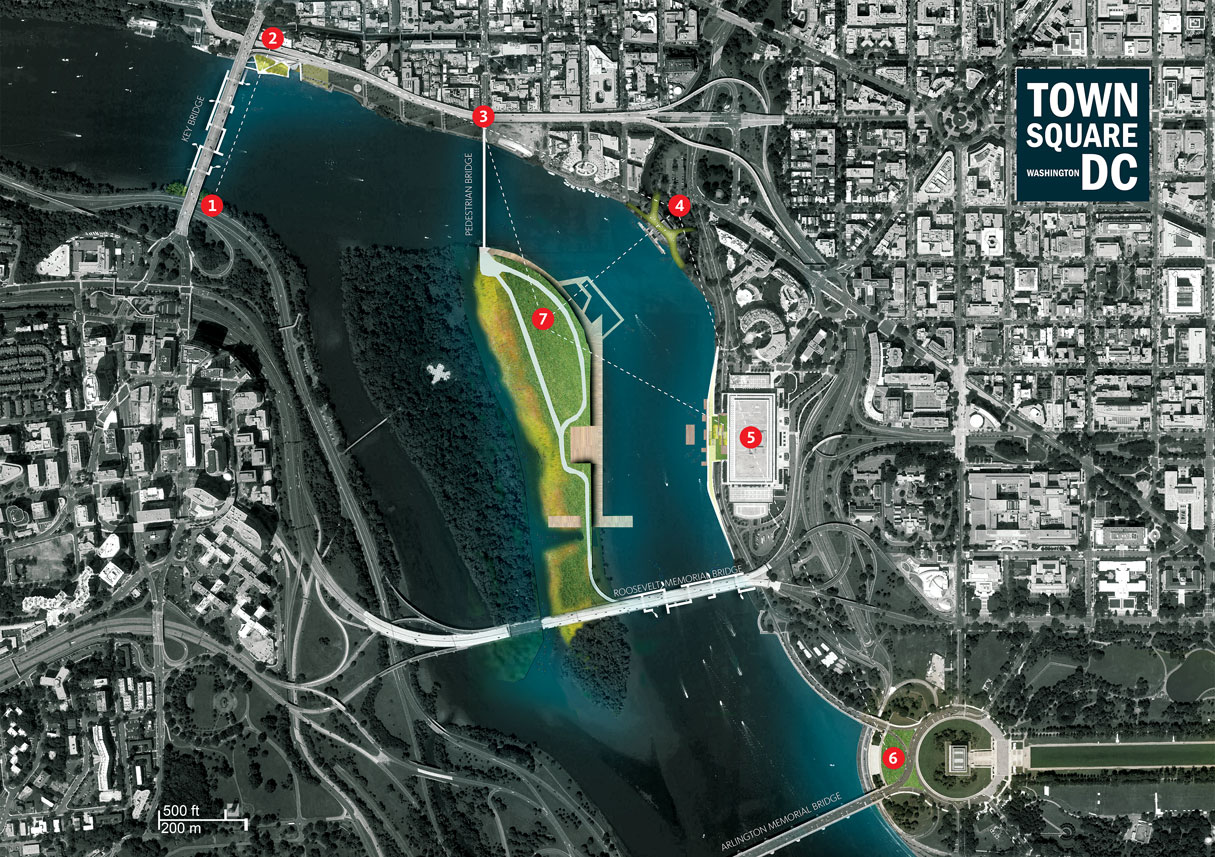Submitted by WA Contents
Architecture firms developed proposals assessing DC’s Security Barriers
United Kingdom Architecture News - Apr 15, 2015 - 09:28 3798 views

Gensler’s designs of a future Washington, DC. Rendering courtesy of Gensler.
Let’s be honest:Tossing out the rules often leads to the kind of creativity that’s as useful as it is crazy. That was the thinking behind a design challenge we extended to local architecture firms. We asked them to pretend money was no object and to picture a District with no Height Act or zoning requirements—how would they reimagine the city in the year 2050? Our favorite proposals offer two very different takes on a future cityscape: one super-practical, the other a fantasy designed to provoke thoughts, not projects. Both left us feeling wild about the possibilities for our region as it grows and evolves.
Gensler:The multinational firm with a K Street office in downtown DC zeroed in on the Georgetown waterfront.
“In 2050, drones may be the primary delivery agents of packages, and driverless cars may be running the roads, but cities will still serve the vital function of providing connections … for services, people, and nature,” the firm writes in its proposal. “The District needs more and better connections to its neighbors and across its waterfront, providing more ways for more people to flow into and out of the city.”

Rendering courtesy of Kube Architecture.
Kube:A small Dupont Circle firm that designs homes, restaurants, and offices rethinks two of our most quintessential spaces.
“Washington is a city of high-security buildings that are not accessible to everyday Americans,” the firm explains. “This proposal allows the public to occupy and enjoy these previously off-limits zones. Our solution is steel-frame ‘scaffold’ prototype superstructures that wrap these iconic buildings, creating usable spaces around and above them, in addition to serving as frames to emphasize the isolation of these buildings.”.......Continue Reading
> via washingtonian.com